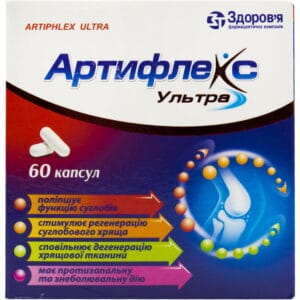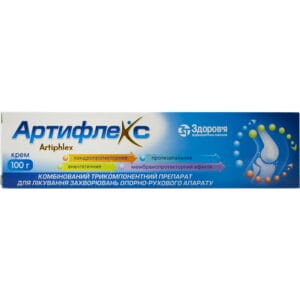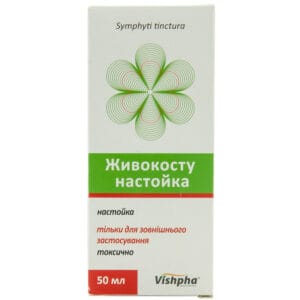The drug “Flamidase Gel” is used for the following indications: local treatment of myositis, fibrositis, sciatica, muscle and tendon sprains, traumatic injuries of the musculoskeletal system, pain in muscles and joints during heavy physical exertion, inflammatory and degenerative joint diseases, rheumatic lesions of the musculoskeletal system: bursitis, arthritis, tendosynovitis, tendinitis.
Composition
1 g of gel contains (active ingredients):
- diclofenac diethylamine – 11.6 mg (equivalent to diclofenac sodium 10 mg);
- methyl salicylate – 100 mg;
- levomenthol – 50 mg.
Excipients: benzyl alcohol; carbopol 934; propylene glycol; citric acid, monohydrate; isopropyl alcohol; disodium edetate; polyethoxylated hydrogenated castor oil; diethylamine; purified water.
Contraindication
- hypersensitivity to diclofenac, acetylsalicylic acid, or other nonsteroidal anti-inflammatory drugs, or to any component of the drug;
- history of attacks of bronchial asthma, urticaria or acute rhinitis caused by taking acetylsalicylic acid and other NSAIDs;
- damage to the epidermis, open wounds in the area of application;
- the last trimester of pregnancy;
- children’s age up to 14 years.
Method of application
For external use only.
Adults and children over 14 years of age should apply a small amount of gel of 2-4 g, which corresponds to the size of a cherry or walnut, to the affected area of the skin 3-4 times a day, gently rubbing until completely absorbed. It is advisable to avoid prolonged use of the gel on large areas of the skin and in large doses. The gel can be used simultaneously with oral use of diclofenac sodium tablets, subject to prior consultation with a doctor.
After applying the drug, hands must be washed, unless this area was not treated.
The duration of treatment depends on the indications and effectiveness of the treatment and is determined by the doctor. The gel should not be used for more than 14 days for soft tissue injuries and rheumatism or for more than 21 days for arthritis pain, unless otherwise recommended by the doctor.
Elderly patients can use normal doses.
Application features
Pregnant women
Since the effect of inhibition of prostaglandin synthesis on the course of pregnancy with topical application of diclofenac has not been studied, the drug can be used during the first 6 months of pregnancy only if, in the opinion of the doctor, the expected benefit to the mother outweighs the risk to the fetus.
During breastfeeding, the drug can be used only if, in the opinion of the doctor, the expected benefit to the mother outweighs the risk to the fetus. In this case, the drug should not be applied to the mammary glands or large areas of skin, and should not be used for a long time (more than 1 week).
Children
When using the drug in children over 14 years of age for longer than 7 days or if the symptoms of the disease worsen, you should consult a doctor.
Drivers
“Flamidase gel” when used externally does not affect the ability to drive vehicles and mechanisms.
Overdose
Overdose is unlikely, since systemic absorption of diclofenac is very low when applied topically. In case of accidental ingestion, systemic adverse reactions may develop.
In case of accidental ingestion of the drug, gastric lavage, administration of adsorbents and symptomatic treatment with the use of therapeutic measures used to treat NSAID poisoning are indicated. The patient should consult a doctor. Symptomatic treatment is carried out when signs of complications appear, such as increased blood pressure, renal failure, convulsions, respiratory depression, complications from the digestive tract.
Side effects
Usually, “Flamidase Gel” is well tolerated by patients.
Systemic reactions. If the gel is applied to large areas of skin for a long time, the possibility of systemic adverse reactions cannot be excluded. However, the probability of their occurrence after topical application of diclofenac is small compared to the frequency of adverse reactions during oral treatment with diclofenac. In the event of systemic reactions, the information provided in the instructions for use for other forms of diclofenac should be followed.
If any skin rashes appear, the use of the drug should be discontinued.
If you experience any other side effects or unusual reactions, you should consult a doctor.
Storage conditions
Store in the original packaging at a temperature not exceeding 30 °C, out of the reach of children. Do not freeze.
Shelf life – 2 years.












Reviews
There are no reviews yet.